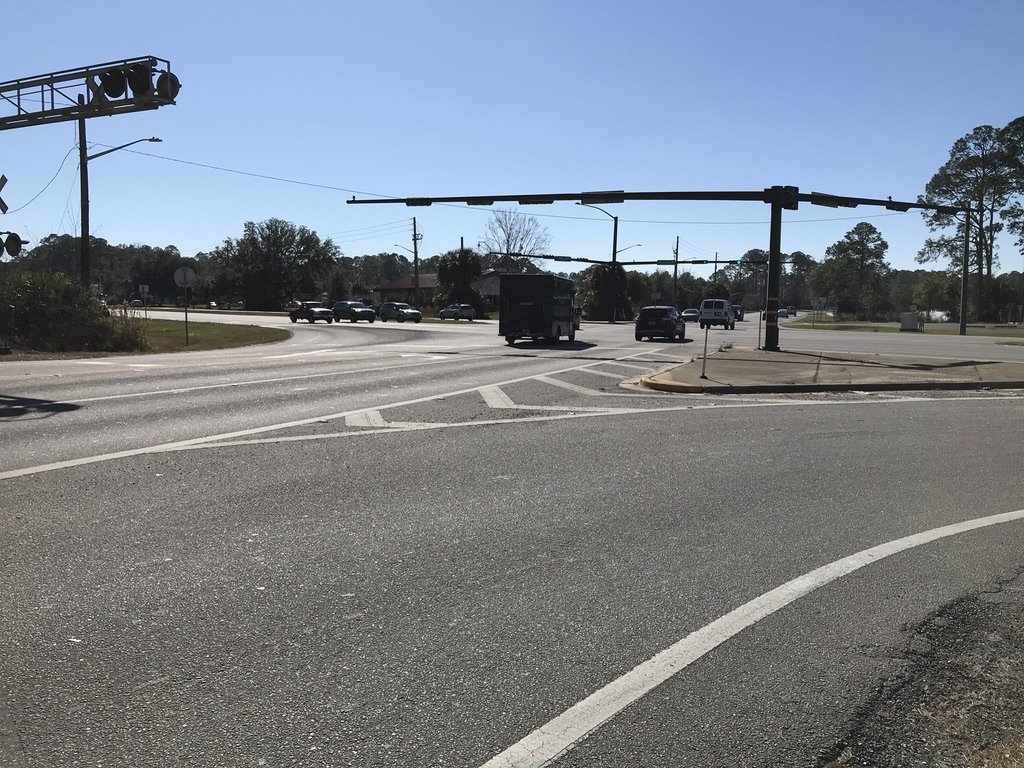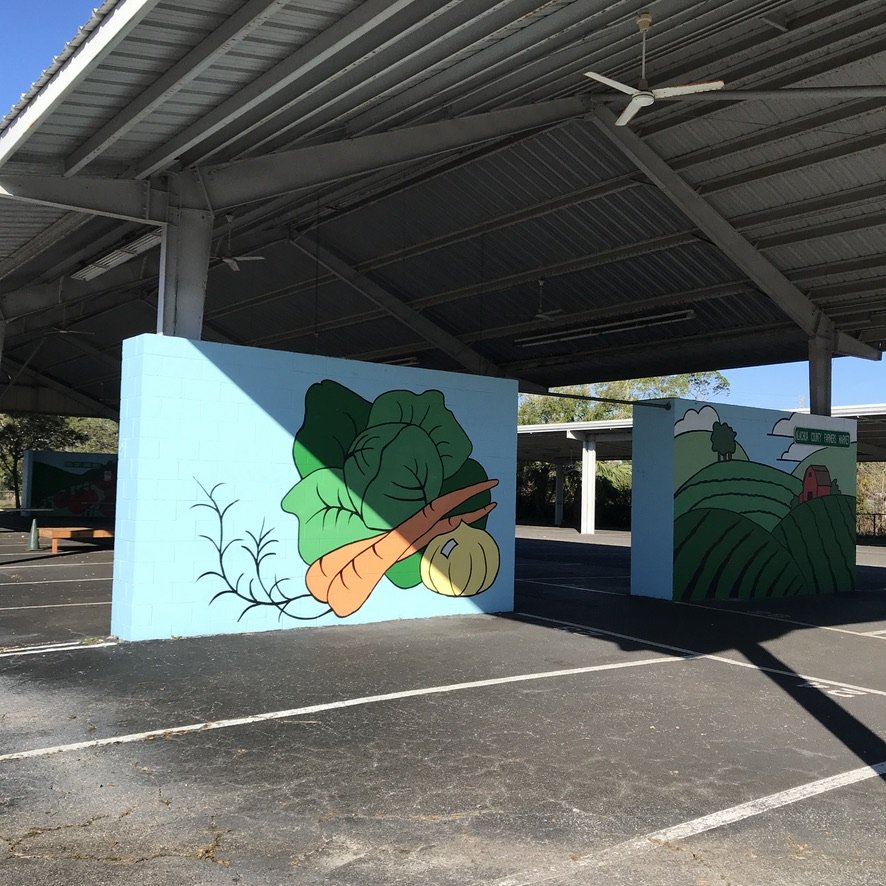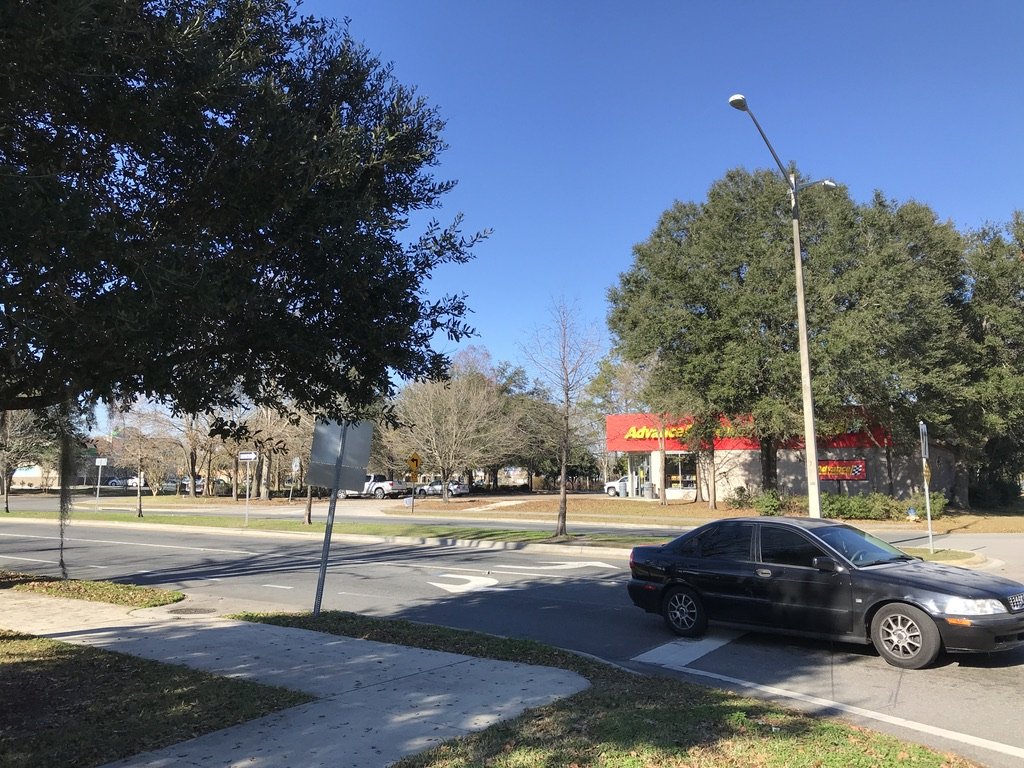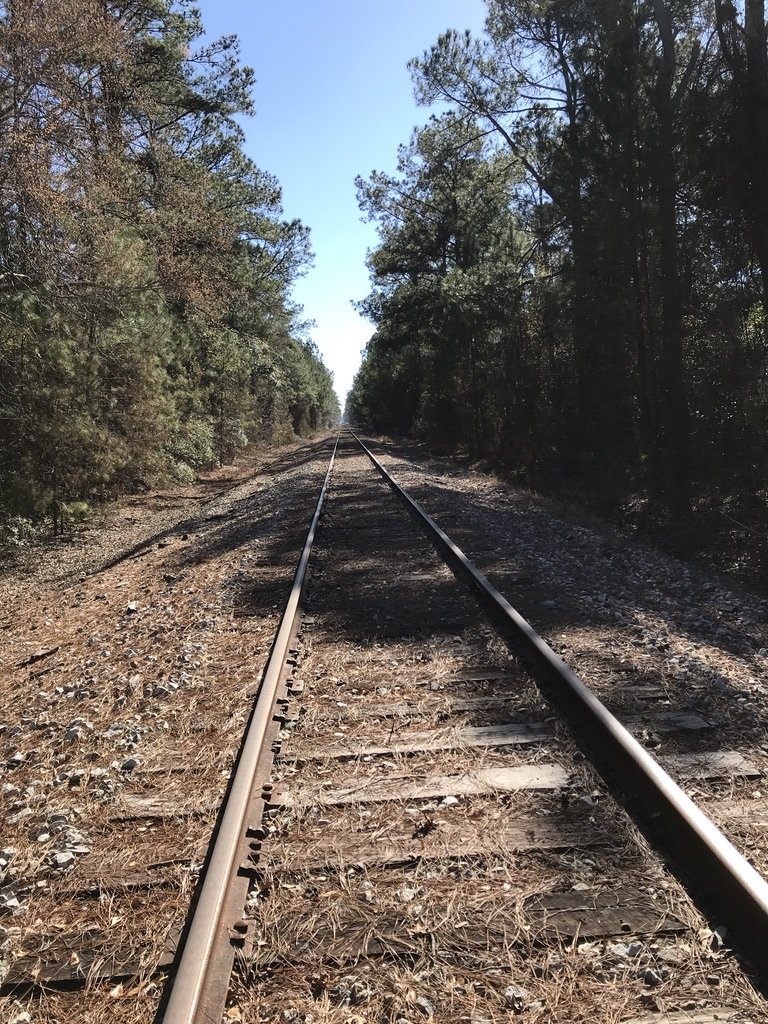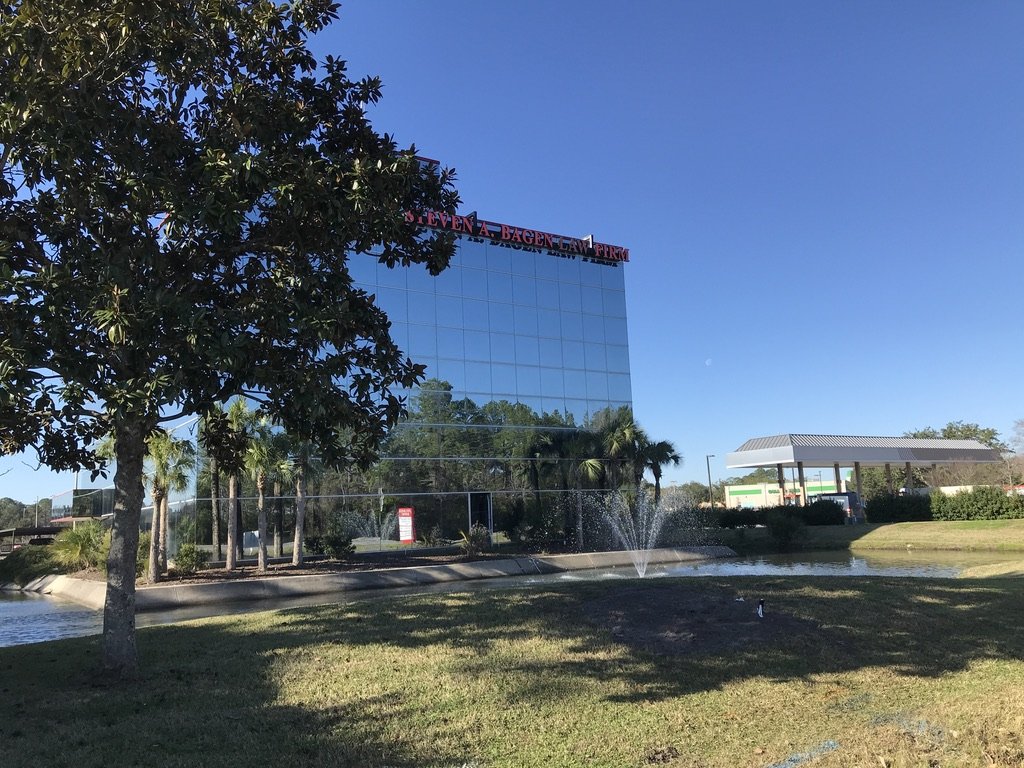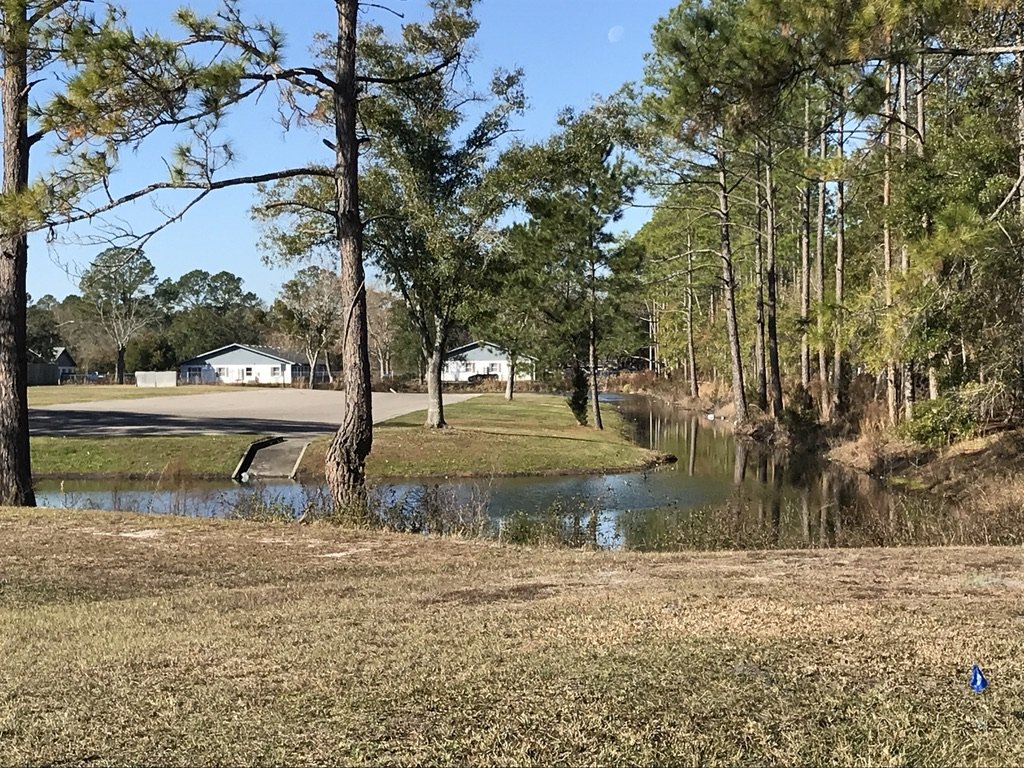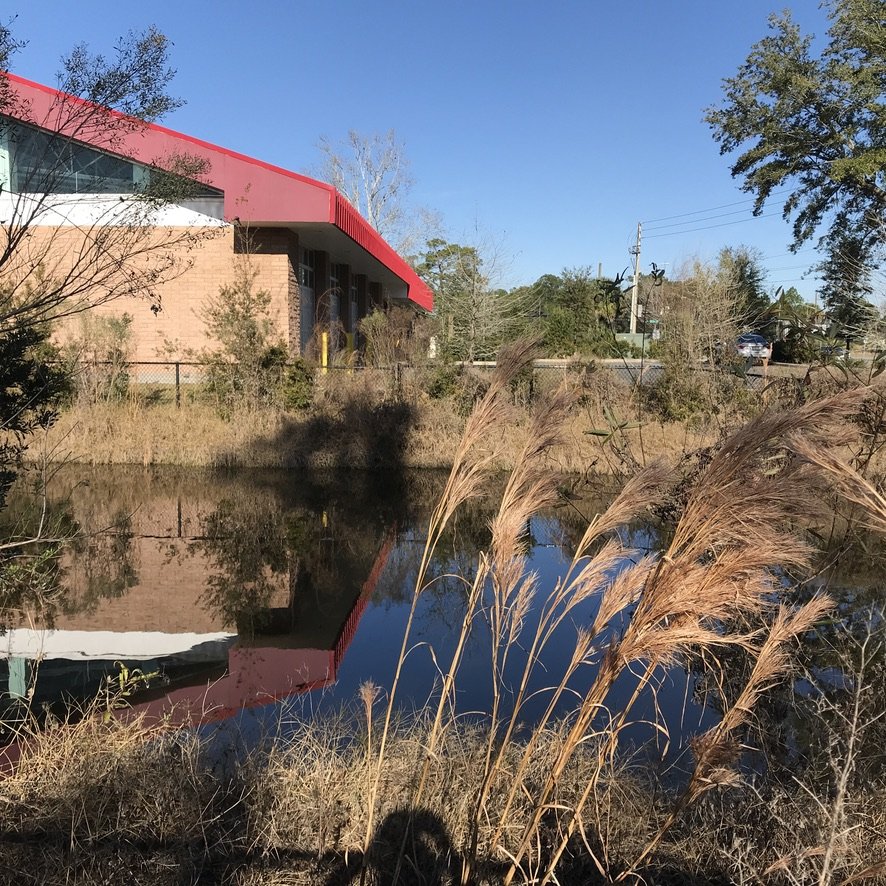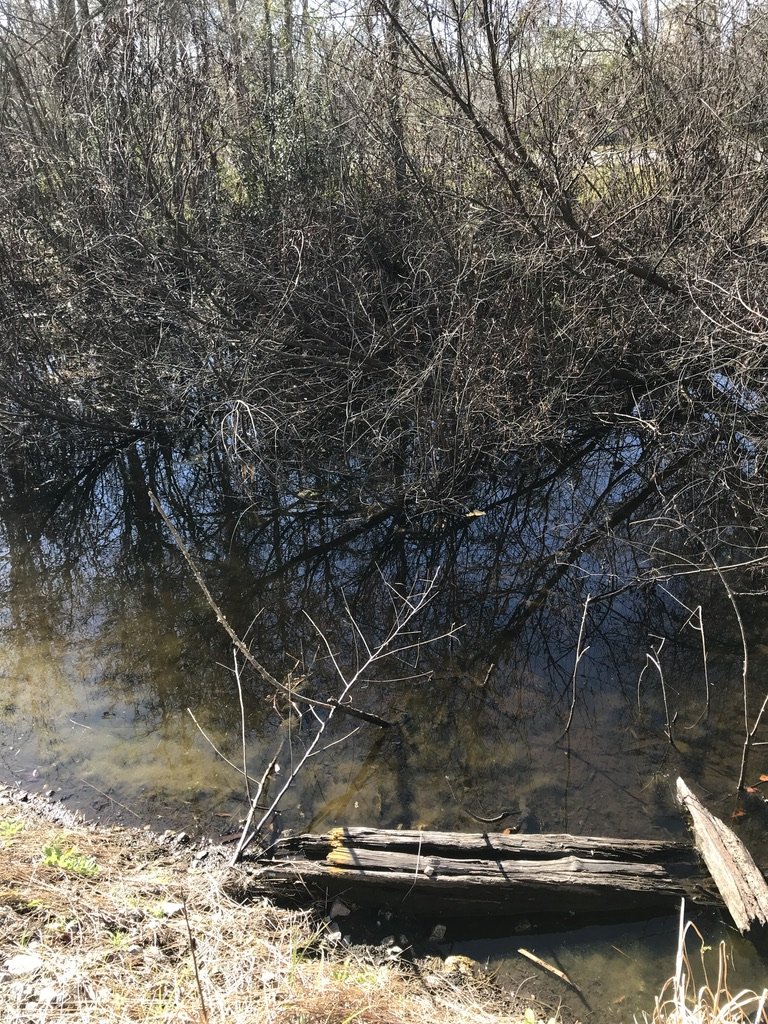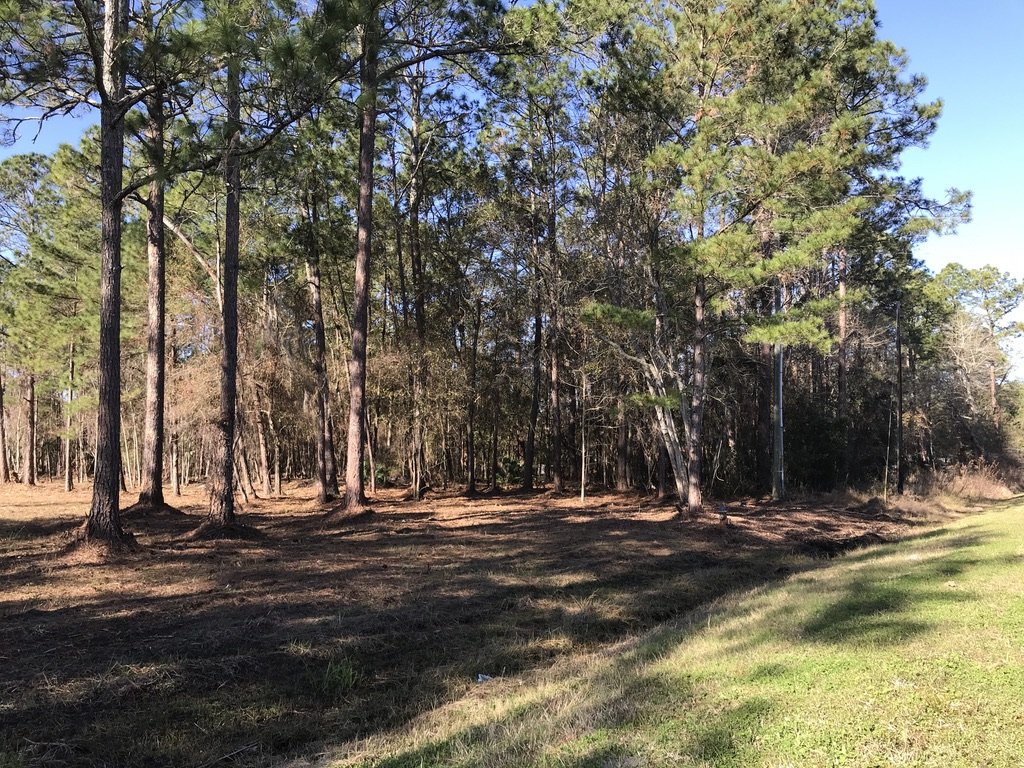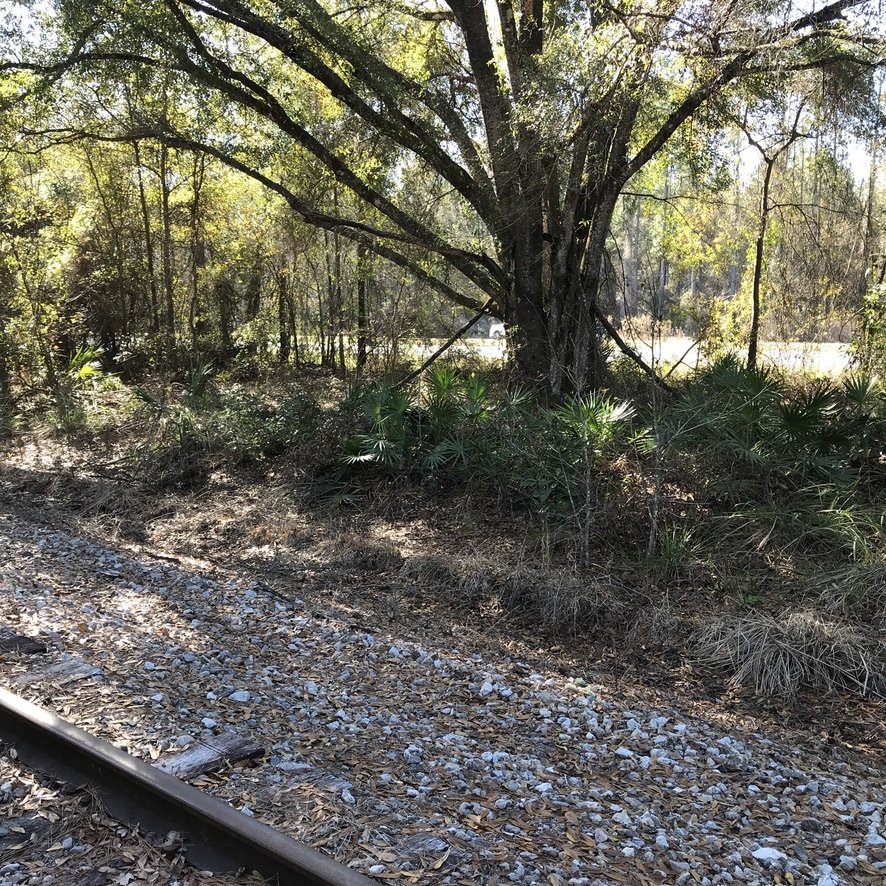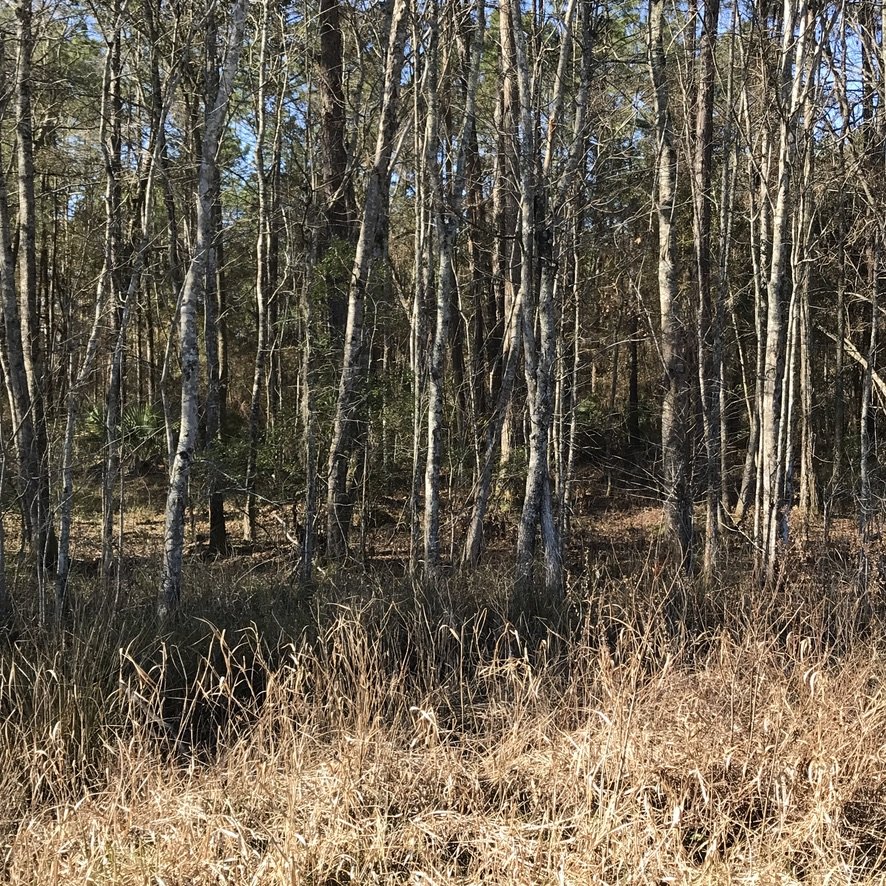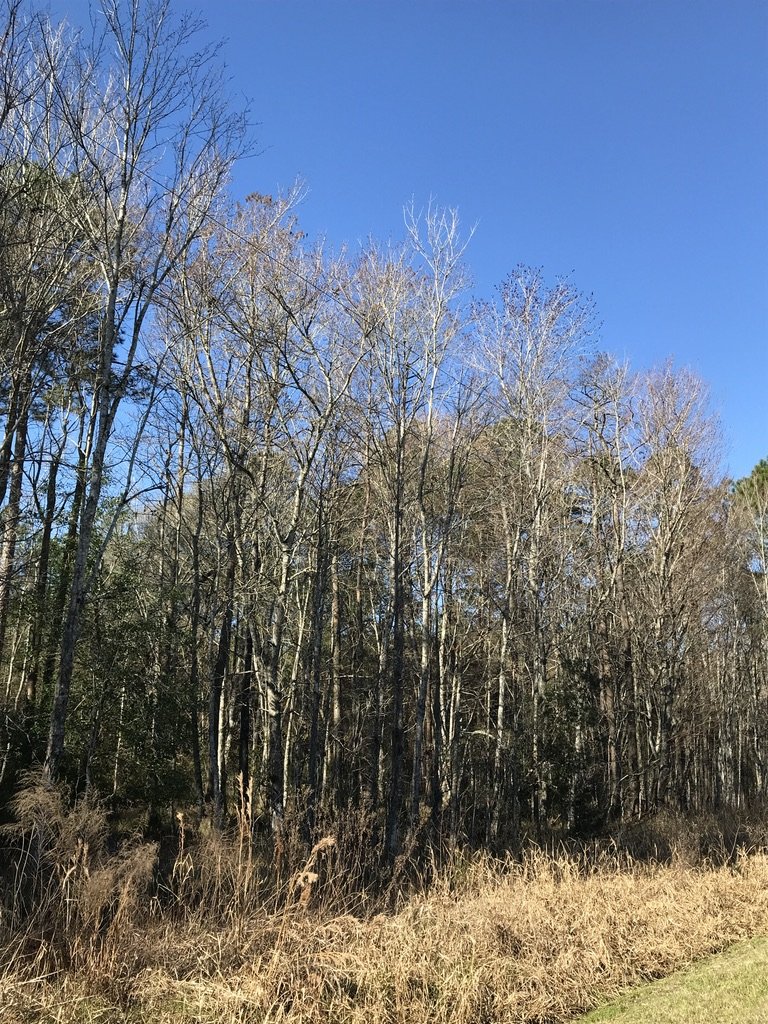The lesson I thought I would teach, and the lessons I learned
Recently I took a one-mile walk, which I conceived as performance art. My friend Susan volunteered to join me.
I was following a prompt suggested by a piece of art I had made in response to a Call for Art from the Deep Transformation Network, affiliated with Stanford University’s Millennium Alliance for Humanity and theBiosphere (MAHB). That piece, generically called a “Fortune Teller,” collected four personal psycho-geographies, which I call my Four Medicines—forests, gardens, walking, water—into one simple combinatorial machine. I described my Fortune Teller in detail in a previous blog post.
The prompt I selected said, “Walk along Highway 441 to make a point.”
Highway 441 is a regional road, running through Gainesville and along the ridge of the Florida peninsula. In Orlando, for example, the same road is known as the Orange Blossom Trail. For a studio years ago, my students researched Highway 441’s origins, and reported that it had been an Indigenous People’s thru-way, before it became Florida’s main drag nearly a century ago.
Today, Highway 441 is a four-lane divided highway, running parallel to an earlier era’s seldom-used railroad track. The stretch I selected, near my studio, starts where two major roads intersect, and effectively where the city of Gainesville becomes “the countryside.” The intersection includes a Walmart Supercenter, Dunkin Donuts, and FedEx and Amazon distribution centers. To the southeast and southwest, a seniors-only apartment complex, farmers’ market, Senior Center, frisbee golf course, and a large quadraplex development give the area a growing population base. Moving northwest, the direction we walked, development quickly gives way to a roadside forest.
Traffic--a mix of commuters, trucks, and more than occasional commuting bicyclists--moves fast. There are few stoplights, narrow shoulders used by bikers, and no sidewalks or crosswalks. The point I thought I would make was directed at these drivers—that the road is hostile to walkers.
We started at the intersection, parking in the Farmers’ Market lot. Walking northwest, I took timed photos every five minutes, as well as photos recording places that held the promise of gardens, forests, and water. We walked one mile northwest along the road, then back along the railroad track, over the course of an hour.
My friend was especially good at spotting serendipitous wet areas, while I methodically followed the rules I had established for the walk. As we moved along, I was surprised to find three Medicines—waters, forests, and evidence of gardens—within this forlorn stretch of highway. These three spatial circumstances, plus the walk itself, provided all the Medicines that had been the subject of my Fortune-Teller.
I thought my performance would “make a point” to passing drivers who would observe how challenging it is to walk along a busy highway. Instead, the point I found was that gardens, forests, and water were lying in wait for me to discovering them.
By my own definition, this stretch of road should satisfy my needs for a healing environment. Why had I not noticed this before? Obviously, because I had always been in a car, driving at speed.
If we want to create a world where people walk, rather than drive, to meet many of their daily needs, we need to rethink the experience of walking. Walking should be safe, of course. But it should also be appealing, or even enchanting.
Following my walk along Highway 441, I have come to envision a continuum of walking conditions:
-At its most dire, walking is unsafe because pedestrians are confronted by vehicles hurtling towards them at 50-80 miles per hour. It is unpleasant because it is noisy and, in Florida, often very hot. It is boring or, worse, soul-deadening because it is filled with trash, derelict buildings, and sometimes threatening people.
-A technocratically designed walk is safe, because there are raised, ample sidewalks. Walkers are separated from cars, and maybe also from bicycles and emerging forms of micro-mobility like electric scooters. Crosswalks, with realistically-timed crossing signals, allow walkers to cross from one side of the street to the other. There may be lighting at night, for added safety.
-A more appealing walk would add welcome shade, and maybe occasional protection from Florida’s cloudbursts. It might dampen road sound with hard barriers (vegetation doesn’t stop sound waves), or mask it with nature’s sounds—rustling bamboo or running water.
-In my walk along Highway 441 I saw the possibility of an enchanting walk.
Random, required stormwater ponds could be laced together to form a necklace of water features.
The forest fragments flanking the highway could be reimagined and reinforced with allées (corridors of stately trees), bosques (trees planted in tight geometric patterns, perhaps in parking areas), and groves. A beautiful stand of maples would be a place of delight, a stately stand of pines a focus of reverence. Occasional specimen trees would merit special attention.
Gardeners would purchase products they needed—seeds, seedlings, soil enrichment, tools, at (yes) the Walmart Supercenter. Gardeners’ produce would be available across the street at the Farmers’ Market, and everyone would come to understand this reciprocal relationship, from products to produce.
Along this enchanting walk, time would compress or stretch to suit walkers’ imaginations and interests. Maybe, for some, cars would become a hindrance rather than a necessity.
This stretch of Highway 441 happens to occupy a summit in Gainesville’s curious terrain. Streams flow from this area in all directions, draining into several different watersheds. The highway parallels an old railroad line, encapsulating more than a century of local transportation history. This stretch of highway is close to a series of 19th century Black settlements, reflecting a nearly lost geographic significance for an important segment of our community. All of these meanings, and more, could be revealed to engaged walkers
I’ve described a one-mile walk, but nearly any mile of Gainesville’s road system could be similarly reimagined.
An enchanting walk would reveal the site’s underlying geology, hydrology, and history. It would celebrate human necessities, like water, shade, and food. It would foreground our planet’s systems, demonstrating equally their beauty and their utility. It would re-knit fragmented ecosystems, incorporating the human experience within these larger systems. It would integrate, rather than segregate, safe travel options for walkers, bicyclists, and motorized vehicles. The experiences of those passing through this area would become part of a much larger, more interesting, and more rewarding whole.

